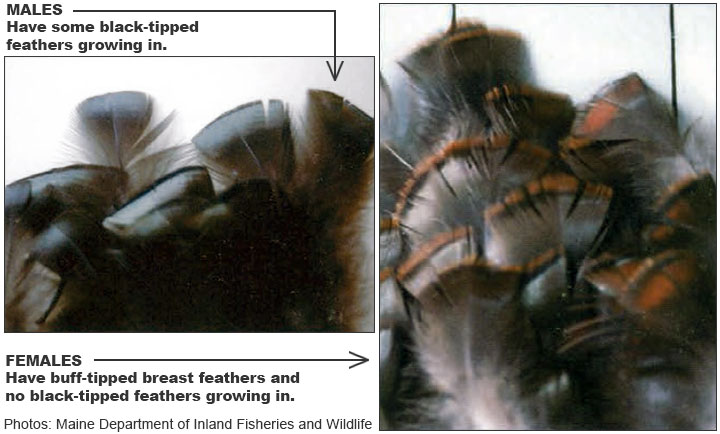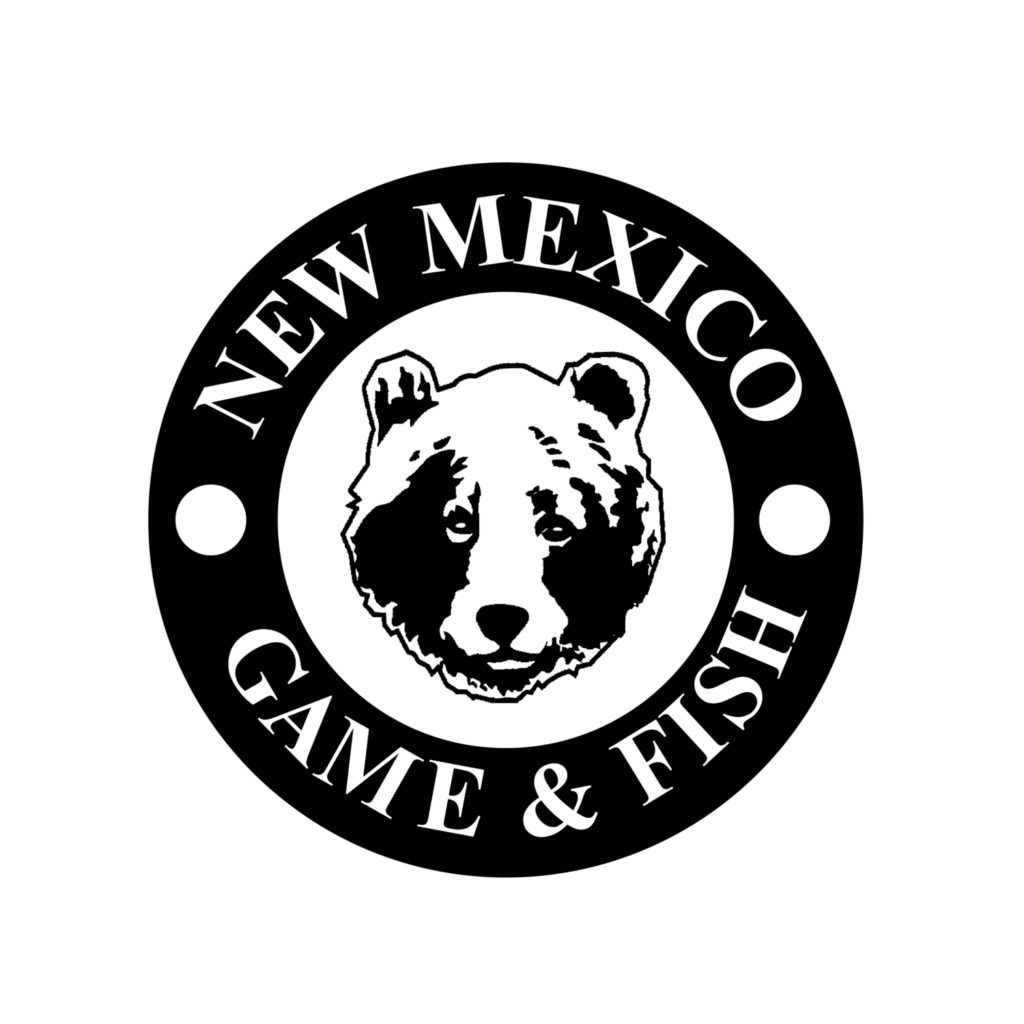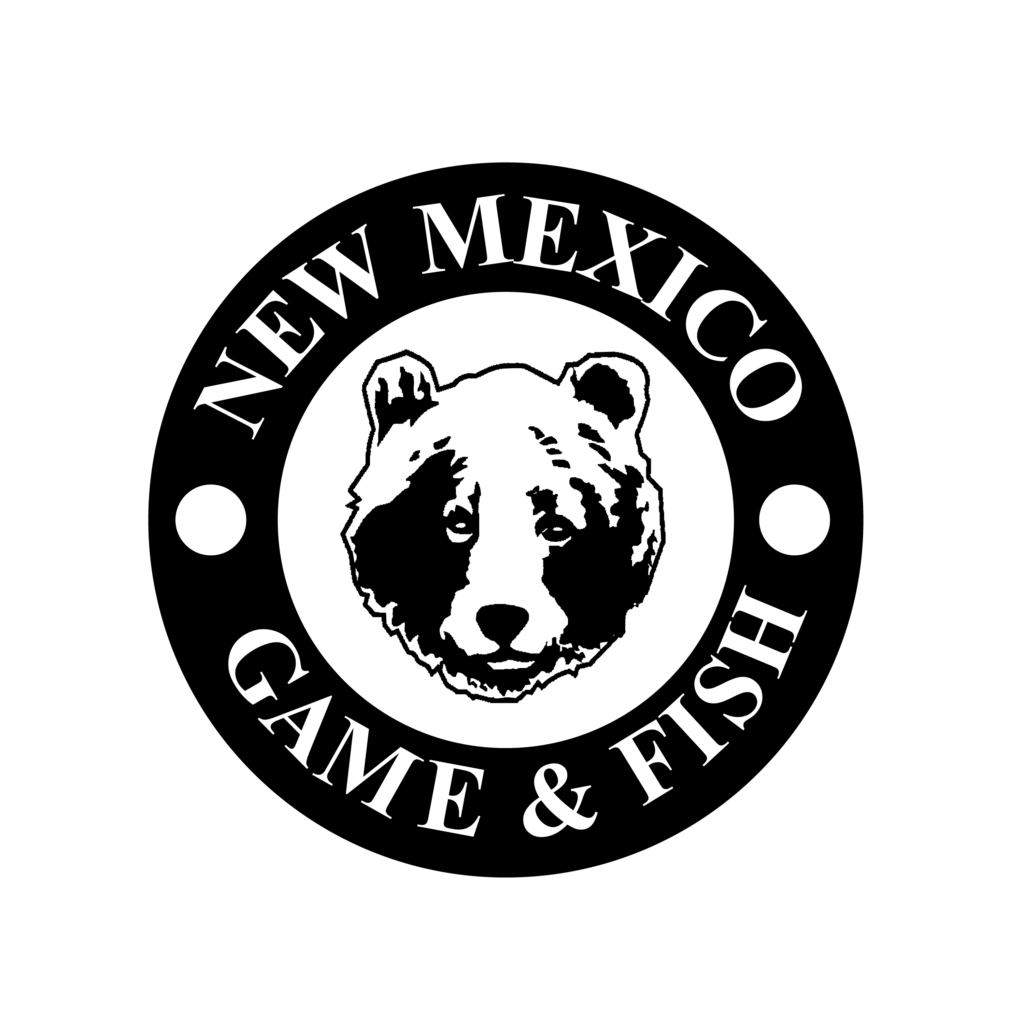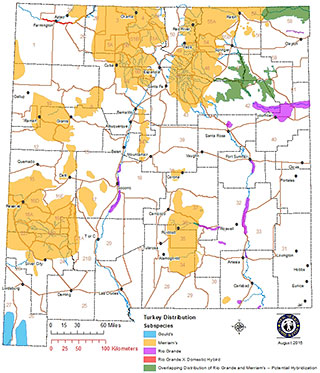Wild Turkey
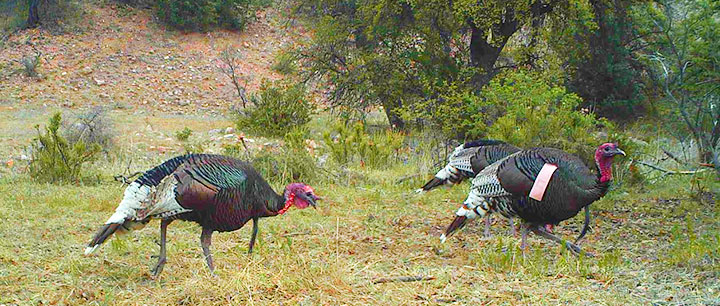
Gould’s turkey (Photo by Ted Jaycox)
Introduction
The wild turkey is the largest game bird in the United States. Though wild turkey populations decreased with overhunting in the late 1800s, translocation of birds has helped to re-establish turkeys throughout much of their native range. Transplants have occurred in New Mexico since 1939 to reintroduce turkeys to their native historic range, and to improve genetics in isolated population areas.
Male turkeys are well known for their spring courtship displays. Males will gobble to attract females and strut with their tail fanned. Turkeys have excellent eyesight and hearing, and are extremely wary. They spend most of the daylight hours on ground, but roost in trees at night. The majority of turkey travel is by walking or running, but they will make short flights when startled.
The main components of suitable turkey habitat include water, roost sites, nest sites, and summer/brood areas. In New Mexico, free water is essential for turkey survival since vegetation may not be able to meet moisture requirements. Turkeys are often found in forested areas interspersed with edges and fields. Turkeys use mature trees for roosting. Typical roost tree are 14+ inches in diameter, and have branches parallel to the ground that are spaced at least 18 inches apart. Turkeys are ground nesters, and will scratch a shallow depression on the ground to use as a nest site. Nests are often located in dense vegetation consisting of grass, fallen leaves, shrubs, or at the base of a tree. A turkey diet varies between and throughout years depending on forage availability. Some food options include grass leaves and seeds, forbs, pine nuts, juniper berries, acorns, invertebrates, and cultivated crops.
New Mexico has three sub-species of wild turkey: Merriam’s, Rio Grande, and Gould’s. The specific habitat types vary by wild turkey subspecies. The subspecies distribution can be found here: New Mexico Turkey Subspecies Distribution Map.
Draw Hunting Maps
Check back for updates.
A Game Hunting License and either an Over-the-Counter Turkey tag or draw permit is required to legally take wild turkey in the state. For in depth hunting and license information, reference the Turkey section of the New Mexico Hunting Rules & Info in publications. Information on turkey harvest in New Mexico can be found in the harvest report below:
Merriam’s
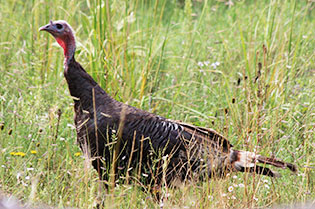
Merriam’s turkey (Photo by J.N. Stuart)
Merriam’s wild turkeys are the most common sub-species in New Mexico. They are primarily found in the mountainous regions of the western United States, particularly in ponderosa pine habitats. They have also increased their range into foothills and some plains river valleys throughout the state. This subspecies is distinguished by the cream-white feathers on the lower back and their tail feather margin. It is blacker in appearance than the Rio Grande subspecies.
Rio Grande
Rio Grande wild turkeys are found in river valleys in New Mexico. They inhabit brush areas near stream and rivers that contain large trees for roosting. Favored riparian areas are generally in open landscapes at elevations lower than 6,000 feet. This subspecies is smaller than the Merriam’s and Gould’s. Their body feathers are paler and copper colored, and their tail feathers are tipped with a yellowish-buff or tan color.
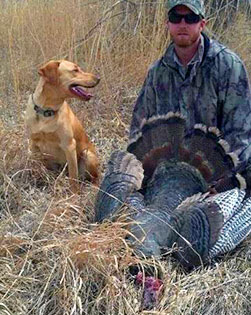
Rio Grande turkey (Photo by S.E. Morris)
Gould’s
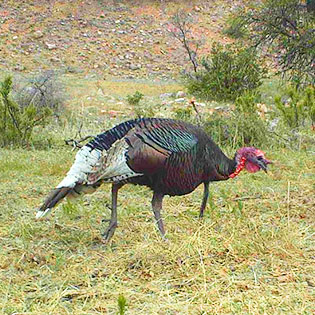
Gould’s turkey (Photo by Ted Jaycox)
Gould’s wild turkeys are the largest of the wild turkey subspecies. They have longer legs, larger feet, and larger center tail feathers than the other New Mexico subspecies. They have distinctive white tips on their tail feathers. This sub-species occurs in the Animas and Peloncillo mountain ranges and the intervening Animas Valley in southern Hidalgo County, New Mexico.
In recent years, New Mexico has completed several translocations of Gould’s turkeys from Arizona. New Mexico currently allows two special permits for a Gould’s harvest each year. These permits are allocated through a raffle and an auction. The money raised from these permits is utilized exclusively for the management of Gould’s turkey in New Mexico. Authorized work such as roost site maintenance is partially funded with these dollars.
Classifying Harvest
Whether you harvest your turkey in spring or fall, you may have questions about the turkey you shot. Here are some suggestions for classifying age and sex of turkeys.
Spring
Regulations require that a spring harvested turkey be bearded. In most cases, you will shoot a male in spring (though up to 10% of the hen population may have beards). Here are the National Wild Turkey Federations guidelines for estimating your male spring turkey’s age.
Fall
The fall turkey season allows for the harvest of one turkey (either sex). Here are some tips for differentiating the sex of turkeys, both adults and juveniles
Adult Turkeys
Females do not have leg spurs.
Most females do not have beards (though studies have shown that up to 10% of the female population can have beards)
The most distinguishing feature of adult male and female turkeys is their breast feathers.
– Males will have black-tipped breast feathers
– Females have buff-tipped breast feathers
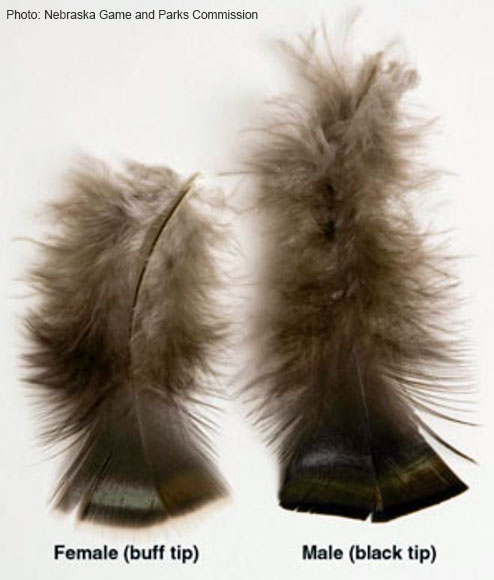
Young of the Year Turkeys
Determining sex of young of the year can be very difficult.
– These juveniles will not have leg spurs, so judging sex by the legs can produce flawed results.
– The breast feathers are the best way to determine a young of the year’s sex.
Brush your hand against the breast feathers to find new growth.
– Males will be black-tipped
– Females will be buff-tipped
